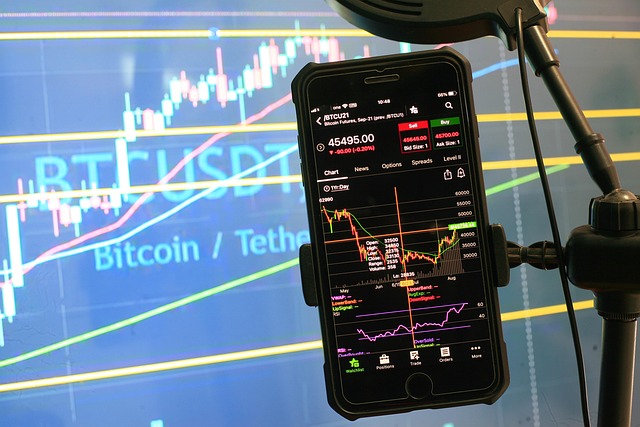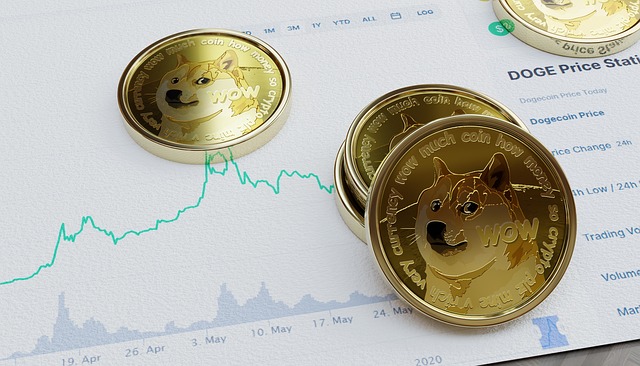Understanding What Is Margin in Crypto Futures Trading: An In-Depth Guide
Author: Jameson Richman Expert
Published On: 2025-08-29
Prepared by Jameson Richman and our team of experts with over a decade of experience in cryptocurrency and digital asset analysis. Learn more about us.
Margin in crypto futures trading is a foundational yet complex concept that involves depositing collateral to open and sustain leveraged trading positions in the highly volatile cryptocurrency markets. Unlike conventional spot trading, where investors buy the full amount of an asset outright, margin trading enables traders to control larger positions with a relatively small capital outlay. This collateral acts as a security deposit, ensuring that traders can meet their financial obligations amid rapid price fluctuations and unpredictable market movements. Mastering the nuances of margin is essential for traders seeking to optimize profit potential while managing the substantial risks characteristic of crypto futures trading.
The explosive growth of crypto futures markets is driven largely by their ability to incorporate leverage—magnifying exposure and potential returns. Leverage allows traders to control positions many times larger than their initial investment, exponentially increasing both upside potential and downside risk. Unlike spot trading, where ownership of cryptocurrencies is direct, futures trading involves contracts that derive their value from underlying assets like Bitcoin, Ethereum, or altcoins. These contracts leverage margin to facilitate sizable trades without requiring full ownership of the underlying cryptocurrencies, thus enabling speculative strategies with less capital but greater risk exposure. As such, understanding how margin functions, alongside effective risk management, is crucial for sustained success in this fast-paced environment.

What Is Margin in Crypto Futures Trading and How Does It Operate?
At its core, margin in crypto futures trading is the collateral deposit made by traders to open a position. It differs significantly from paying the full contract value upfront; instead, traders are required to deposit an initial margin—typically a percentage of the total position size—serving as a performance bond. This initial margin is set by the trading platform based on multiple factors, including the specific futures instrument, underlying asset volatility, prevailing market conditions, and the leverage level selected by the trader. The primary purpose of margin is to act as a financial safeguard, covering potential losses and ensuring traders can fulfill their obligations, which promotes market stability and prevents defaults that could ripple through the trading ecosystem.
For example, consider a trader who wants to open a Bitcoin futures contract valued at $10,000 on an exchange requiring a 10% initial margin. The trader would need to deposit $1,000; the remaining $9,000 is effectively borrowed from the platform. This setup gives the trader a leverage ratio of 10x. Profits are amplified proportionally if the market moves favorably, but losses are equally magnified if the market moves against the position. Recognizing the interplay between leverage and margin is fundamental—higher leverage increases potential gains but also significantly amplifies risk, often leading to rapid liquidation during adverse market movements.
Distinguishing Initial Margin and Maintenance Margin
Crypto futures exchanges specify two critical margin thresholds: the initial margin and the maintenance margin. The initial margin is the upfront deposit required to open a new position, acting as a buffer against market volatility and potential losses. The maintenance margin, on the other hand, is the minimum level of equity—account balance relative to the position—that must be maintained to keep the position open. If adverse market movements cause the account balance to fall below this threshold, the trader receives a margin call—prompting them to deposit additional funds or reduce their position size to restore the required margin level.
Failing to meet these margin requirements can trigger auto-liquidation, where the exchange automatically closes the trader’s position to prevent further losses that could threaten the platform’s integrity. The specifics of liquidation protocols vary across exchanges and are influenced by current market conditions, including liquidity and volatility. Maintaining adequate margin levels through continuous monitoring and proactive risk management strategies is vital—especially given the high leverage often employed. Proper margin management minimizes the risk of forced liquidations during turbulent markets, ensuring more consistent trading operations and capital preservation.
Leverage and Margin Trading: An In-Depth Perspective
Leverage in crypto futures trading signifies the ability to control a position larger than the trader’s own capital, thereby magnifying exposure to market movements. For instance, with 10x leverage, a trader can open a $10,000 position with only $1,000 of their own funds. This means even a small percentage change in the asset’s price can lead to outsized gains or losses—potentially doubling profits or wiping out the initial margin quickly.
While leverage offers the prospect of higher returns, it also dramatically increases risk. A 1% adverse move in the underlying asset can result in a 10% loss relative to the margin used in a 10x leveraged position. This risk-reward dynamic requires traders to be disciplined and strategic. Conservative traders often prefer lower leverage—such as 2x or 3x—to mitigate potential losses, while more aggressive traders may opt for higher leverage to maximize gains. Responsible leverage management entails setting strict stop-loss orders, employing proper position sizing, and constantly monitoring market conditions. Advanced tools such as trailing stops, hedging strategies, and diversification can help traders control risk exposure effectively, especially in the highly volatile crypto landscape.

Risks and Challenges of Margin in Crypto Futures Trading
Engaging in margin trading within crypto futures markets presents significant risks primarily due to the extreme volatility of cryptocurrencies. Rapid, unpredictable price swings can cause swift erosion of margins, leading to forced liquidations and substantial losses. Since leverage amplifies both gains and losses, traders risk losing more than their initial margin deposit if the market moves unfavorably. In cases of steep declines, losses can surpass the deposited collateral, especially if the platform’s auto-liquidation mechanisms or slippage during sharp downturns fail to execute timely closures.
External factors such as regulatory crackdowns, technological failures, macroeconomic news, or systemic shocks can incite sudden and severe market reactions, further exacerbating risks. To mitigate these hazards, traders should employ rigorous risk management techniques including placing stop-loss and take-profit orders, diversifying across multiple assets, and avoiding excessive leverage. Staying well-informed about market signals, technical indicators, and fundamental news is essential to make timely decisions. Resources like Crypto Buy Sell Indicator Free in 2025 - A Comprehensive Guide for Traders can help traders refine their risk mitigation strategies and stay updated on evolving market conditions.
Getting Started with Margin Trading in Crypto: Step-by-Step
To commence margin trading, traders should select reputable and regulated exchanges that prioritize security, transparency, and user education. Leading platforms such as Binance, Mexc, Bitget, and Bybit offer extensive margin options (ranging from 2x to 125x), intuitive interfaces, and comprehensive tutorials to help newcomers understand the mechanics of margin, leverage, and risk management. Beginners are advised to start with low leverage, such as 2x or 3x, to familiarize themselves with margin operations and build confidence without exposing themselves to excessive risk.
Practicing on demo accounts or paper trading features—available on most platforms—allows traders to test strategies and understand margin dynamics risk-free. Registering through trusted referral links like Binance, Mexc, Bitget, or Bybit ensures access to educational resources, tutorials, and demo modes. These tools are invaluable for mastering margin mechanics, leverage management, and developing sound risk control practices before risking real funds.
Effective Strategies for Managing Margin and Leverage Risks
Proper risk management is paramount in crypto futures trading—especially when employing leverage. Traders should implement stop-loss orders to cap potential losses and take-profit orders to secure gains at predefined levels. Diversifying holdings across multiple cryptocurrencies reduces exposure to the volatility of any single asset. Limiting leverage to manageable levels—preferably within 2x to 5x—can significantly reduce the risk of liquidation during sudden market swings.
Regular review and adjustment of trading strategies based on technical analysis, macroeconomic news, and market sentiment are essential to stay aligned with evolving conditions. Advanced traders utilize techniques such as hedging (using opposite positions to offset risk), trailing stops (which follow favorable price movements), and continuous portfolio monitoring to mitigate systemic risks. Engaging with copy trading or signal services from experienced traders can further help manage risk by leveraging collective expertise. Resources like this comprehensive guide and Copy Trading in Hindi can deepen your understanding and improve your strategic approach.

Conclusion: Navigating the Complex World of Margin in Crypto Futures
In conclusion, a thorough understanding of margin in crypto futures trading is indispensable for those looking to leverage the transformative potential of cryptocurrencies responsibly. While margin trading offers lucrative opportunities for profit, it also introduces substantial risks—particularly given the market’s high volatility. Success demands comprehensive knowledge, disciplined risk management, and the use of reputable, regulated trading platforms. Continuous education, strategic planning, and cautious leverage use are essential to navigate the fast-paced, unpredictable crypto futures landscape effectively.
For further insights, detailed guides, and advanced trading strategies, explore resources like this in-depth analysis. Such resources expand trading knowledge beyond cryptocurrencies into related commodities and broader financial markets, enriching your overall understanding of trading dynamics across asset classes and enhancing your ability to adapt to various market conditions.